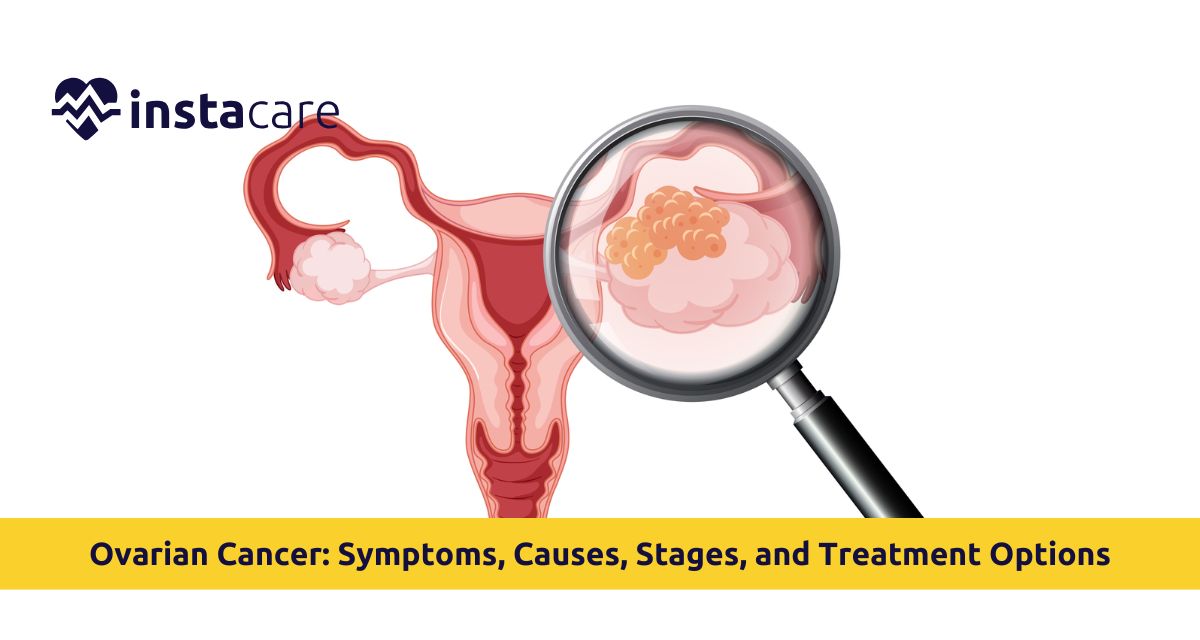Lately, ovarian cancer is a highly deadly cancer afflicting hundreds of thousands of girls every year worldwide. Earlier, it was known to be a "silent killer" since the cancer usually went on unnoticed. Detection was generally accomplished late in the course of disease. There have thus been changes with the treatment regimens into ovarian cancer incidence, which still remains one of the most frequently diagnosed malignancies among females.
There is the effort made to create Ovarian cancer awareness so that there is early recognition for detection, prognosis, and survival. The more empowered a woman is with knowledge of cause, symptoms, risk factors, diagnostics, and management, the more confident she is in making decisions for herself as an independent entity.
What is Ovarian Cancer?
Ovarian cancer originates in the ovaries, which are the female reproductive organs. The ovaries contain the ovum and the hormones progesterone and estrogen. When the cells of an ovary become abnormal in their growth and form tumors, it is termed ovarian cancer. Tumors can be malignant or benign. A malignant tumor, if not treated, can spread to different parts of the body.
Different types of ovarian cancers exist, among which the most common are following. There are different kinds of ovarian cancer, and the most prevalent among them is epithelial ovarian cancer. The remaining two types of ovarian cancer, i.e., germ cell tumor and stromal tumor, are not common and are seen among women who are of young age. Ovarian cancer is not yet proven, but there are certain genes and certain environmental elements through which ovarian cancer exists.
Common Symptoms of Ovarian Cancer
There are no ovarian cancer symptoms and signs because they are normal and harmless. They are predominantly unremarkable compared to normal urinary or gastrointestinal symptoms. Suspicious or persistent ones, however, need to be evaluated by a physician. Some of the benign symptoms are:
- Abdominal or abdominal distension and bloating
- Abdominal or pelvic discomfort
- Trouble eating or early fullness
- Urination or urination frequency
- Fatigue and unexpected fatigue
- Change or irregularity of menstruation
- Backache
- Constipation and bowel habits
- Painful intercourse
Early signs of ovarian cancer are subtle or deceptive with mild illnesses. Any lasting signs that appear more than two weeks are sufficient reasons to go visit a doctor for counsel.
Causes and Risk Factors of Ovarian Cancer
Although there are no recognized common Ovarian cancer causes, scientists have discovered certain risk factors:
- Age: The risk factor increases as a function of age, especially over the age of 50 years.
- Family History: Risk is increased if family history of first-degree relative with colon, breast, or ovarian cancer.
- Genetic Mutations: BRCA1 and BRCA2 gene mutations greatly increases risk of ovarian cancer.
- Reproductive History: Never having given birth increases risk.
- Endometriosis: Endometriosis increases risk of ovarian cancer.
- Hormone Replacement Therapy (HRT): Long-term HRT increases risk.
- Obesity: Increases risk for almost all cancers, including ovarian cancer.
Information regarding Ovarian cancer risk factors helps the physicians as well as the women in arriving at the proper decision for preventive treatment and screening hours.
Steps of Ovarian Cancer
Stages of ovarian cancer help in the prognosis of the progression of the disease as well as the treatment. Steps are:
- Phase I: Tumor is either present in one or both the ovaries.
- Phase II: Dissemination to peritoneal organs in direct communication with the pelvic cavity.
- Stage III: Spread to lining of peritoneum or lymph node.
- Stage IV: Distant spread to organs such as liver or lung.
The ovarian cancer is a good opportunity for having a good ovarian cancer prognosis if at all it develops not so late in stages. Detection in its initial stages is hence most important to an optimal outcome.
Ovarian Cancer Diagnosis
Test to test and step by step to determine whether one has the disease and how it has spread:
- Pelvic Exam: Whether there is any alteration of the ovary or uterus.
- Transvaginal Ultrasound (TVUS): Provides pictures of ovaries and detects cysts or masses.
- CA-125 Blood Test: Detects the level of CA-125, a protein that is normally elevated with ovarian cancer.
- Imaging Tests: CT, MRI, or PET scans help in scanning for spread.
- Biopsy: Tissues in biopsy identify cancer cells.
- Genetic Testing: Identifies mutation in BRCA1 or BRCA2 genes and is also utilized in planning treatment.
Genetic testing for ovarian cancer is of most benefit for such women with affirmative family history of cancer among relatives or have identified mutation.
Treatment of Ovarian Cancer
Ovarian cancer treatment varies according to stage, type of ovarian cancer, and overall well-being of the patient. All most important treatments of ovarian cancer are:
- Surgery: Most common initial treatment, in which one or both of the ovaries, uterus, fallopian tubes, and involved tissues are removed. Cancer staging surgery establishes how far the cancer has spread.
- Chemotherapy: Intensive treatment with very potent drugs to kill cancer cells. Ovarian cancer chemotherapy is at times administered after surgery to kill any remaining cancer cells.
- Targeted Therapy: Administer drugs that kill only the cancer cells' specific genetic profile with comparatively less devastating effect on normal cells.
- Radiation Therapy: Less frequently utilized but in the case of localized tumors.
- Hormone Therapy: Slows the hormones on which some ovarian cancers are able to survive.
Multidisciplinary treatment with surgery,
Chemotherapy for ovarian cancer, and target therapy is the most promising hope for cure.
Prevention and Risk Reduction for Ovarian Cancer
Ovarian cancer cannot be prevented, but some of the following will decrease the risk:
- Genetic Testing and Counseling: Detection of women with genetic predisposition at high risk so that preventive treatment can be initiated.
- Oral Contraceptives: Their use for extremely long durations has been observed to decrease the risk.
- Pregnancy and Lactation: They have been shown to reduce the risk.
- Preventive Surgery: Preventive oophorectomy and salpingectomy can be offered to BRCA gene and ovarian cancer mutation carriers.
- Healthy Lifestyle Habits: Diet, physical exercise, and ideal body weight could reduce the risk as a whole for cancer.
Identification of risk factors of ovarian cancer and medical decision-making before risk could be made a part of prevention as well.
Conclusion
Ovarian cancer is a risky one and more is to be added as much as precaution and awareness are needed.
Information about what is ovarian cancer, symptoms, cause, and treatment is very effective information that possibly might be required by women as the starting of medical care. Early detection raises the Ovarian cancer survival rate, and more importantly places weight to awareness rather than early sign and screening test, initially by providing it to women with familial or hereditary background. Women can detect a first warning sign of danger and stop ovarian cancer if doctors heed and educate them.
Please book an appointment with the
Best Gynecologist in Lahore, Karachi, Islamabad, and all major cities of Pakistan through
InstaCare, or call our helpline at 03171777509 to find a verified doctor for your disease.

